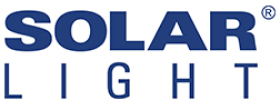
Ultraviolet Radiation Protection Factor, or UPF, is not to be confused with Sun Protection Factor (SPF).
Here is how UPF and SPF are different:
SPF, Sun Protection Factor, is the signature acronym for sunscreens across the world. It refers to a product’s ability to screen out UVB-type radiation. UVB is the primary type of solar radiation associated with sunburn, skin cancer and many other issues.
UPF, or Ultraviolet Protection Factor, on the other hand, is used to compare the UV protection of fabrics. UPF measures the ratio of erthemally weighted UV light to the amount of UV light screened by the fabric.
Researchers and manufacturers measure UPF[1] on a scale of 1-50. For example: Imagine a fabric’s UPF rating is 35. That means that of the sunburn-effective ultraviolet light that is incident on that fabric, the amount that makes it out of the other side is reduced by a factor of 35.
Michael W. Allen, Ph. D and Gordon Bain, Ph. D. of Thermo Fisher Scientific explain that you can also consider UPF rating as “a time factor for the protection of Caucasian skin compared to exposure without any protection.” They go on to give this example: if a person would show visible erythema (sunburn) after five minutes of exposure, fabric with a UPF of 35 extends that time to five minutes times the protection factor, i.e.160 minutes, or 2 hours and 40 minutes.
So, SPF and UPF can be closely correlated, but they are quite different. UPF is a growing industry. Many people and places are benefitting from advanced fabrics manufactured with high UPF ratings.
Following are some examples:
Building Materials
Many building materials are being made to offer UV and sunlight protection. Not only in the windows themselves, but in the awnings, covers, blinds and more that incorporate fabric into their parts.
These fabrics can help reduce the amount of heat from sunlight that enters a residence or commercial establishment. Reducing the sunlight entering a property can result in lower costs related to cooling and many other benefits.
Clothing
Recently there has been an influx of clothing made with UPF-rated fabrics. These clothes are great for exercise and visits to the beach, as they will cut down on sunburn and exposure to ultraviolet light.
Clothing with high UPF ratings is beneficial for people on medications or with medical conditions that create sensitivity to sunlight.
Baby Appliances/Accessories
Baby appliances including strollers, carriages, and covered playpens. Young children (especially infants) often have skin sensitive to the sun. The changes to the skin after a sun exposure make take a day or more to become fully effective. A child does not know when they are being burned by the sun, and these products are creating safer environments for children of all ages worldwide.
Strollers and other accessories will benefit greatly from UPF-rated fabrics. When combined with sunscreen and UPF-rated clothing, ultraviolet exposure is significantly reduced.
Camping Tools and Goods
Campers worldwide can also reap the benefits of UPF research. UPF rated fabrics and materials are used to make tents and portable canopies tents.
UPF-rated fabrics are also used to make many tools and accessories like backpacks, shoes and other gear. These goods protect the contents from sunlight and also suffer less damage over time from exposure to the sun.
Party Goods and Supplies
Many catering, party and event planning companies are benefitting from the selling point that canopy tents with sun protective fabrics will last much longer.
Aside from canopy tents, there are also umbrellas of all sizes being made with UPF rated fabrics.
Our Conclusion
These fabrics all need to be thoroughly researched by organizations like ourselves. We at The Solar Light Company take pride in our research and development. We strive to find products that are constantly improving and getting stronger, so that we can help build industries of the future.
[1] AATCC Test Method 183-2014, Transmittance or Blocking of Erythemally Weighted Ultraviolet Radiation through Fabrics
